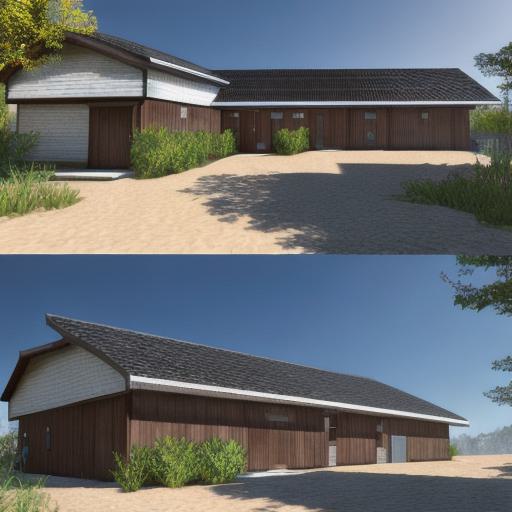As the gaming industry continues to grow, game development has become more complex and requires a structured approach to ensure that games are delivered on time and within budget. One of the essential documents used in game development is the game design document (GDD). In this article, we will explore what a GDD is and how it impacts game development.
What is a Game Design Document (GDD)?

A game design document is a detailed plan that outlines the design, features, and functionality of a game. It is created by game designers and developers during the pre-production phase of game development and serves as a blueprint for the entire team to follow throughout the development process. The GDD includes information on the game’s story, characters, levels, mechanics, AI, user interface, graphics, sound, and other critical aspects of the game.
The primary purpose of a GDD is to ensure that everyone involved in the game development process has a clear understanding of what the final product should look like and how it will be delivered. It helps to align the expectations of different stakeholders and provides a roadmap for the team to follow.
How Does a Game Design Document Impact Game Development?
The impact of a GDD on game development cannot be overstated. A well-designed GDD can help to streamline the development process, reduce the likelihood of errors and delays, and ensure that the final product meets the expectations of the target audience. Here are some ways in which a GDD impacts game development:
- Defines the project scope: The GDD defines the scope of the project by outlining the objectives, requirements, constraints, and deliverables. This information helps to ensure that everyone involved in the project has a clear understanding of what is expected of them and what the final product should look like.
- Establishes project timelines: The GDD establishes the project timelines by defining the key milestones, deadlines, and dependencies. This information helps to ensure that the project stays on track and is delivered within the specified timeframe.
- Enables effective communication: The GDD facilitates effective communication between different teams and stakeholders involved in the development process. It provides a common language and framework for discussing project goals, requirements, and progress.
- Provides a basis for decision-making: The GDD provides a basis for decision-making by outlining the design decisions, trade-offs, and risks associated with different options. This information helps to ensure that the team makes informed decisions that align with the project objectives.
- Supports quality assurance: The GDD supports quality assurance by providing a detailed plan for testing and validation. It defines the acceptance criteria and metrics for measuring the success of the game, helping to ensure that the final product meets the expectations of the target audience.
Real-Life Examples of the Impact of GDD on Game Development
To illustrate the impact of GDD on game development, let’s take a look at two real-life examples:
- The Legend of Zelda: Breath of the Wild
The Legend of Zelda: Breath of the Wild is one of the most successful video games of all time. The development team used a comprehensive GDD to ensure that the game was delivered on time and within budget. The GDD included information on the game’s story, characters, levels, mechanics, AI, user interface, graphics, sound, and other critical aspects of the game.
The impact of the GDD on the development of Breath of the Wild can be seen in the following ways:
- The GDD helped to define the project scope, ensuring that everyone involved in the development process had a clear understanding of what the final product should look like and how it would be delivered.
- The GDD established the project timelines, enabling the team to work efficiently and meet the deadlines.
- The GDD facilitated effective communication between different teams and stakeholders, ensuring that everyone was on the same page.
- The GDD provided a basis for decision-making, helping the team make informed decisions that aligned with the project objectives.
- The GDD supported quality assurance, defining the acceptance criteria and metrics for measuring the success of the game.
- World of Warcraft
World of Warcraft is one of the most successful massively multiplayer online role-playing games (MMORPGs) of all time. The development team used a detailed GDD to ensure that the game was delivered on time and within budget. The GDD included information on the game’s story, characters, levels, mechanics, AI, user interface, graphics, sound, and other critical aspects of the game.
The impact of the GDD on the development of World of Warcraft can be seen in the following ways:
- The GDD helped to define the project scope, ensuring that everyone involved in the development process had a clear understanding of what the final product should look like and how it would be delivered.
- The GDD established the project timelines, enabling the team to work efficiently and meet the deadlines.
- The GDD facilitated effective communication between different teams and stakeholders, ensuring that everyone was on the same page.
- The GDD provided a basis for decision-making, helping the team make informed decisions that aligned with the project objectives.
- The GDD supported quality assurance, defining the acceptance criteria and metrics for measuring the success of the game.
FAQs
- What is the purpose of a game design document?
The purpose of a game design document is to ensure that everyone involved in the game development process has a clear understanding of what the final product should look like and how it will be delivered. It helps to align the expectations of different stakeholders and provides a roadmap for the team to follow.
- How does a game design document impact game development?
A well-designed GDD can help to streamline the development process, reduce the likelihood of errors and delays, and ensure that the final product meets the expectations of the target audience. It defines the project scope, establishes project timelines, enables effective communication, provides a basis for decision-making, and supports quality assurance.
- Can a game design document be changed during the development process?
Yes, a game design document can be changed during the development process as new information becomes available or as requirements change. It is important to maintain a version control system to track changes and ensure that everyone involved in the project is working with the latest version of the GDD.
- What are some common mistakes made when creating a game design document?
Some common mistakes made when creating a game design document include not involving all stakeholders, not defining clear objectives and requirements, not establishing realistic timelines and budgets, not providing enough detail on the design decisions and trade-offs, and not regularly reviewing and updating the GDD as the project progresses.
Conclusion
A well-designed game design document is essential for successful game development. It helps to define the project scope, establish project timelines, enable effective communication, provide a basis for decision-making, and support quality assurance. By following best practices and avoiding common mistakes, game developers can create a comprehensive GDD that will help to ensure the success of their projects.
